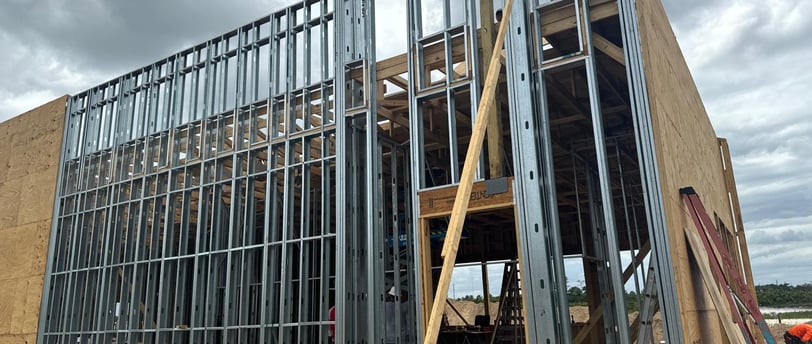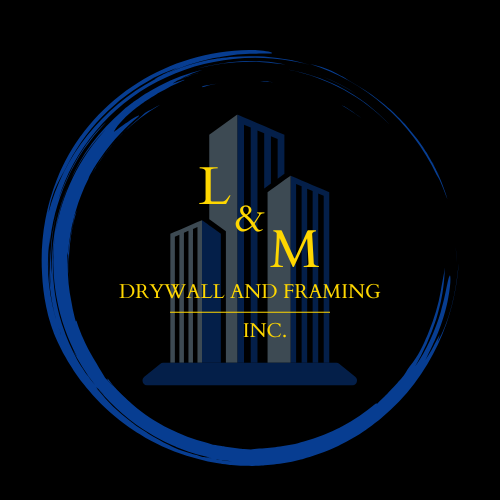CALL TODAY! → (321) 442-6490
The Essential Guide to Metal Framing in Commercial Construction
Discover why metal framing is the backbone of commercial construction. We explain its advantages and uses across various industries. A must-read for business owners and contractors alike.
5/16/20255 min read


Understanding Metal Framing
Metal framing is a technique widely utilized in commercial construction, characterized by the use of metal components, primarily steel, to create the structural framework of buildings. This method has gained considerable popularity owing to its durability, strength, and flexibility compared to traditional wood framing. Steel, being the material of choice, offers numerous advantages that significantly enhance the construction and performance of commercial structures.
One of the paramount benefits of metal framing is its ability to withstand various stresses and loads, which is vital in supporting the overall stability of a building. Steel frameworks can accommodate heavy loads that are common in commercial environments, such as office equipment, furniture, and other heavier amenities. This structural resilience ensures that buildings are not only safe for occupation but also able to endure through different environmental challenges, such as high winds or seismic events.
Additionally, metal framing exhibits superior longevity. Unlike wood, which can be susceptible to decay and pest infestations, steel is impervious to such issues. This durability translates into reduced maintenance costs over the lifespan of commercial buildings, making metal framing an economically sound investment. Furthermore, steel's fire-resistant properties contribute to enhanced safety, minimizing the risks associated with fire hazards.
The materials and components used in metal framing play a pivotal role in its effectiveness. Steel studs, tracks, and other connectors are designed with precision to ensure ease of assembly and alignment, allowing for a streamlined construction process. This efficiency not only accelerates project timelines but also contributes to overall cost savings. As modern architecture continues to evolve, the reliance on metal framing in commercial construction signifies a shift towards materials that promise greater safety, longevity, and resilience.
Benefits of Metal Framing in Retail Stores, Restaurants, and Office Spaces
Metal framing has emerged as a preferred construction method across various commercial sectors, including retail stores, restaurants, and office environments. One of the primary advantages of metal framing is its fire resistance. Metal materials do not ignite or contribute to the spread of fire, significantly enhancing the safety of commercial spaces. This is particularly important for retail stores that often house valuable inventory and crowded restaurants where fire hazards could pose serious risks to patrons and staff alike.
In addition to enhancing fire safety, metal framing offers robust protection against pests. Unlike traditional wood framing, metal structures are impervious to termites, rodents, and mold, thus ensuring a healthier and more lasting environment. This characteristic is crucial in restaurants, where hygiene and food safety standards are paramount. Eliminating pest-related concerns not only protects the physical structure but also contributes to consistent operational efficiency and customer satisfaction.
Another noteworthy benefit of metal framing is its excellent acoustic performance. The use of metal studs leads to improved sound insulation, which is vital in crowded retail settings and bustling restaurants. By minimizing noise levels, these spaces can create a more pleasant ambiance for customers and employees. Additionally, the metal framing system offers enhanced design flexibility, allowing architects and designers to create innovative layouts that optimize space utilization while adhering to aesthetic considerations. The versatility of metal framing can accommodate the unique design requirements of modern office spaces, ensuring a pleasing environment that fosters productivity.
These multiple advantages underline that metal framing is a strategic choice for various commercial environments. From its commendable safety features to its ability to enhance the overall design and functionality of spaces, metal framing stands out as an invaluable asset in the realm of modern construction.
Comparing Metal Framing to Wood Framing
In the realm of commercial construction, the choice between metal and wood framing is critical, as it influences the structural integrity, longevity, and overall performance of a building. One of the most significant advantages of metal framing is its durability. Unlike wood, which is susceptible to rot, termites, and warping due to moisture, metal remains stable in various environmental conditions. This resistance significantly reduces the need for extensive maintenance over time, making metal framing a cost-effective solution for long-term projects.
Cost efficiency is another vital aspect when comparing metal and wood framing. Although the initial investment for metal framing may be higher, its long lifespan and reduced maintenance costs can lead to significant savings in the overall lifecycle of the building. Metal frames typically require fewer repairs, are less likely to sustain damage, and can often be salvaged for reuse, further enhancing their economic viability. Moreover, the availability of advanced manufacturing processes for metal components has made them more accessible and cost-competitive in recent years.
Compliance with building codes and standards also highlights the benefits of metal framing. Many local and national building codes promote or even mandate the use of non-combustible materials, especially in commercial structures, which makes metal a favorable choice. Metal framing is inherently fire-resistant and can provide a higher level of safety, meeting regulatory requirements without cumbersome modifications. Additionally, metal frames can be designed to meet specific load requirements and are often more adaptable to various architectural designs.
In conclusion, when evaluating metal framing alongside its wooden counterpart, it becomes evident that the advantages of metal framing—durability, cost efficiency, and compliance with building regulations—make it a preferred option for contemporary commercial construction projects. Choosing metal over wood not only enhances the structural performance but also ensures long-term sustainability and economic benefits for builders and developers alike.
The Rise of Metal Framing in Central Florida Commercial Construction
In recent years, metal framing has gained remarkable traction in the commercial construction sector of Central Florida. This shift can be attributed to several critical factors that encompass regulatory, environmental, and economic aspects. Local building codes in Central Florida increasingly favor metal framing systems over traditional wood frameworks. Such codes often necessitate materials that meet heightened safety standards, fire resistance requirements, and durability metrics. Consequently, steel and metal systems have emerged as the preferred choice for commercial buildings, providing assurance against the rapid environmental changes common in this region.
Climate considerations also play a pivotal role in bolstering the popularity of metal framing in the area. Central Florida is known for its extreme weather conditions, including hurricanes and high humidity. Metal framing systems offer substantially greater resilience compared to other construction materials, making them an efficient choice in locations prone to such environmental stresses. The inherently strong and non-combustible nature of steel not only enhances structural integrity but also assures building longevity, reducing the risk of severe damage from weather-related events.
Moreover, the push for sustainability within the construction industry has propelled the adoption of metal framing solutions. Many steel products are manufactured from recycled materials, aligning with the growing demand for environmentally conscious building practices. Utilizing metal framing aids in minimizing carbon footprints, making it a valuable choice for projects seeking green certifications. For instance, several recent commercial construction projects in Central Florida have successfully implemented metal framing to meet sustainable building standards while minimizing construction waste and enhancing energy efficiency.
As the commercial construction landscape in Central Florida continues to evolve, it is clear that metal framing systems will remain at the forefront. Their adaptability and performance in the face of local challenges position them as a vital trend in the region's building practices.
SUBSCRIBE TO OUR NEWSLETTER
CALL:
(321) 442-6490
HOURS:
Mon-Sat
9:00am-5:00pm
COPYRIGHT © 2025 L&M Drywall And Framing INC.


